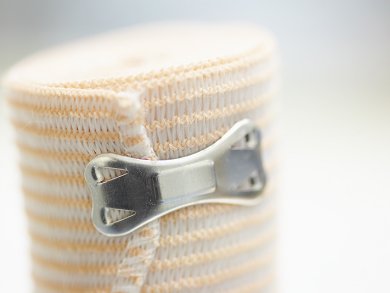Burn wound infection can lead to superficial wounds deteriorating into deeper tissue damage and increase the risk of sepsis, one of the most critical complications with a high mortality rate. Conventional dressings reduce the risk of infection and are suitable for wrapping relatively flat wounds, but it can be difficult to efficiently wrap burn wounds on fingers, toes, and the perineum.
Yosuke Okamura, Shinji Takeoka, Waseda University, Japan, and colleagues have developed biodegradable nanosheets that can be applied as a simple patchwork covering to irregular shaped burn surfaces. The nanosheets are made from poly(L-lactic acid) (PLLA) by alternately and repeatedly spin-coating a SiO2 substrate with poly(vinyl) alcohol (PVA) and PLLA. After drying, the sacrificial PVA layers are dissolved in water, leaving the PLLA layers free in the solution. The PLLA nanosheets are fragmented by homogenization and then reconstructed into a patchwork sheet that firmly attaches to irregular surfaces without the need for any adhesive reagents.
This patchwork of PLLA nanosheets was able to act as a physical barrier to prevent infection by Pseudomonas aeruginosa for three days. Moreover, an additional patchwork treatment on day three could effectively prolong the period of wound protection for another three days.
This material shows great promise as a novel burn wound dressing and could improve the quality of life for burn patients by reducing the need for dressings to be changed daily.
- Fragmentation of Poly(lactic acid) Nanosheets and Patchwork Treatment for Burn Wounds,
Yosuke Okamura, Koki Kabata, Manabu Kinoshita, Hiromi Miyazaki, Akihiro Saito, Toshinori Fujie, Shinya Ohtsubo, Daizoh Saitoh, Shinji Takeoka,
Adv. Mater. 2012.
DOI: 10.1002/adma.201202851



